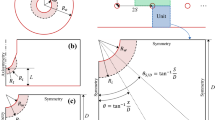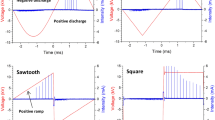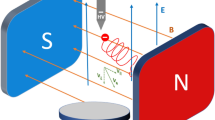Abstract
A NUMBER of investigators1,2 in the field of negative point-to-plane corona have reported on the unsteady nature of the discharge at high values of gap voltages. Reference has been made to the movement of the active-spot about the point, and the formation of ‘plural spots’. I have found that, with certain gap geometries, a new mode of discharge can be observed.
This is a preview of subscription content, access via your institution
Access options
Subscribe to this journal
Receive 51 print issues and online access
$199.00 per year
only $3.90 per issue
Buy this article
- Purchase on Springer Link
- Instant access to full article PDF
Prices may be subject to local taxes which are calculated during checkout
Similar content being viewed by others
References
Trichel, G. W., Phys. Rev., 54, 1078 (1938).
Loeb, L. B., and Kipp, A. F., J. App. Phys., 10, 142 (1939).
Loeb, L. B., J. App. Phys., 19, 882 (1948).
Author information
Authors and Affiliations
Rights and permissions
About this article
Cite this article
GREENWOOD, A. Negative Point-to-Plane Corona—a New Mode of the Discharge. Nature 168, 41–42 (1951). https://doi.org/10.1038/168041b0
Issue Date:
DOI: https://doi.org/10.1038/168041b0
Comments
By submitting a comment you agree to abide by our Terms and Community Guidelines. If you find something abusive or that does not comply with our terms or guidelines please flag it as inappropriate.



